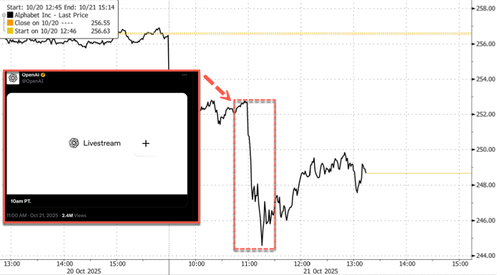(0:00 - 0:52)
Hey, it's Dr. Bob Dickson here with Dr. Bob's Day 12 of the 25-day campaign for safe water in Calgary, Alberta, Canada. Today will just be a short chat on what do we actually do with fluoride in the water? Where does it go? How is it used? Well, as studies show, and there's various studies from different places in the world, but probably between 90 to 99% of water is not consumed. It's not used for human consumption.
So that means it's used to wash cars, flush toilets, by industry, water our lawns, etc. It's used for things other than for drinking. And so even if it did work, which of course we know that it doesn't now from the previous days, talks that we've had, even if it did work, it's a poor way to distribute things.
(0:52 - 6:13)
Well, let me tell you folks, water fluoridation is one of the most rejected public health practices in the entire planet, and in the whole world. So let's go across Canada. British Columbia, right next door to us here to the west, 98% not fluoridated.
Alberta, about 42% right now fluoridated. Saskatchewan, Manitoba, they're all around 60% fluoridated. Ontario, it's a big 71% of Ontario is fluoridated.
But right next door to Ontario is Quebec at 99.75% not fluoridated. That's not fluoridated, no fluoride in the water. 97% of Europe is not fluoridated.
They don't want to put something in the water that they can't control the dose. And plus they say it's toxic. Why would you put it in the water anyway? The rest of the world, it's getting close to 96% of the world is not fluoridated.
United States, they're probably down to about 60% because they're tackling it down there. And Utah, the state of Utah does not fluoridate now by strict law. Nobody can fluoridate in Utah.
That happened in March. And in May, just last month, the state of Florida voted to also not fluoridate any of their water. So Health Canada, they suggest that we fluoridate 0.7 parts per million.
They don't regulate it. They have no safety studies. We've done FOIAs, Freedom of Information Acts, requests with Health Canada.
They have zero studies to prove safety and efficacy as well. CDC in the States, no studies. The EPA, no studies.
The FDA, none. Alberta Health Services, none. City of Calgary, uh-uh.
No health studies, no safety studies. The last year or so has been incredible as far as the amount of studies and science that have come out. Neurotoxicity proven in the National Toxicology Program report that came out in August of 2024.
They studied this for eight years and they came out with, yes, fluoride is a known toxicity, a proven toxin for kids' brains. The federal court case that wrapped up after seven years in the United States, again, proved that fluoride at levels close to what we're using in North America, which is 0.7 parts per million, is probable cause of neurotoxicity. And the Environmental Protection Agency was ordered to do something about it.
There's 87 studies now showing neurotoxicity, 87. And 11 studies showing no effect. So you can see where the preponderance of evidence lies.
And out of those, 18 of the 19 highest rated studies showed newer toxicity or brain damage. So, new studies. Lots of studies out for a lot of years, actually.
But just in the last year, year and a half, there's been two major studies. And one is the Lotus study of England with 10 million participants. Actually, let's correct that.
6.4 million participants over 10 years. 6.4 million people were studied over 10 years. And it showed less than 4% efficacy, probably closer to 2% to 3% efficacy or effectiveness.
That means less than one quarter of a cavity saved in a lifetime. And then there's a Cochrane Collaboration systematic report that came out in early October of 2024, showing exactly the same thing. They reviewed 20, over 20 of the major studies, and every single one of them showed efficacy of less than 4%.
And so you're dumping about, according to our calculations, about 160 tons of your toxin, which in this case is a hydrofluorosilicic acid, into that very same river. And they're going to put that toxin back in the public water. And we got nothing to say about it because the Councillors won't answer us, the Mayor won't answer us, Water Works won't answer us.
And it's just going to go ahead and do it. They spent $28 million for taxpayers' money to build the infrastructure. And they're going to spend about a million dollars a year for that toxic waste project.
So the fertilizer industries don't have to dispose of it. Now the pro-fluoridationists will always say, oh, we're controlling the concentration of you little people. You don't have to worry about that.
Well, concentration, folks, is not the same as dose. And that's why 97% of Europe is not fluoridated, because they looked at that and went, you can't control the medicine in the water. So why would you bother doing that? So as a for instance, if I'm working outside or playing pickleball outside, I might drink 10 glasses of fluoridated water.
And you might drink one being in an office or in a setting that doesn't require a lot of water. That means that I'm getting 10 times the dose that you're getting if I'm drinking 10 times as many glasses of water. So no control of dose to dosage.
Well, a lot of mixed information out there. But the Supreme Court of Canada has said in the 1950s that fluoride is a medication. FDA has agreed that fluoride is a medication.
The Supreme Court of New Zealand in 2018 stated that fluoride is indeed a medication. And in the federal court case that we won last year in 2024, it was stated there too that fluoride is a medication. So therefore, it should be treated like a medication, not like the toxic waste that's scrubbed out of the industry stacks like the fertilizer industry in Florida.
















